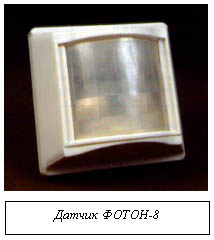Questions and Answers
|
«Today, a computer or a device based on computer components is widely used as a video recorder. To ensure high quality, large disk arrays are required, which leads to a significant increase in the budget. This is especially evident when using modern megapixel cameras. What are the methods for reducing the required disk space without losing the quality of the archived image? — Pavel ANTIPOV, Moscow»
Oleg NIKULIN, manager of Pelco, answers the reader's question
With the advent of computer technology in the world of video surveillance, the quality of recording has increased dramatically. 10 years ago, no one dreamed of an archive with a depth of 30 days, a resolution of 4 CIF and a speed of 25 frames per second, and today this is a standard customer requirement. Moreover, megapixel streams are already recorded without loss of quality.
But you have to pay for this breakthrough. You can't just go buy any disk on the market. The disks must be special, not household ones, designed for a large number of recording cycles. You can't save here, because losing a disk can lead to serious holes in the security system.
The disk array must be RAID5 or RAID6 (in this case, you can change 2 disks in a running system if they suddenly fail).
Therefore, the issue of disk space optimization is very important for any budget. What can you advise?
Firstly, compression. The better the video stream is compressed at the source (IP camera or encoder), the less disk space will be needed. Therefore, all serious manufacturers have switched to H.264. In terms of savings, this is 2-3 times more effective than MPEG-4 and more than 5 times more effective than M-JPEG.
Moreover, there are variations within H.264. For example, Pelco uses the so-called high profile, which provides savings of another 20-25% compared to the more common base and main.
Secondly, these are software methods for optimizing the video archive. Pelco, for example, has a patented EnduraStore technology, the idea of which is that when 97% of the disk space is filled, the system does not simply erase old records, but can first thin out the archive, deleting the so-called change frames and leaving only the reference frames. This will free up space by reducing the number of frames per second in the archive, but maintaining the archive depth (number of days of recording) and resolution. For example, live video at 25 frames per second can be automatically converted to 6 or 2 frames per second, which is quite enough for subsequent analysis. The losses for the security service will be minimal, and the savings are significant. This will give us another 30-35% of disk space.
As a result, when designing a system on Pelco Endura equipment, significantly (sometimes 2 times!) less disk space is required than when using equipment from most competitors.
|
|
«We are going to implement a video surveillance system in our shopping center and are now faced with a choice between analog and IP equipment. On the one hand, we want to install more modern equipment, but on the other, we need to stay within the approved budget. What do you advise?
Igor Boytsov, Kazan»
Dmitry Streltsov, regional manager of Mitsubishi Electric EVS for Russia and the CIS, answers the reader's question.
Unfortunately, the author of the question did not specify whether they are going to upgrade video surveillance within the existing infrastructure of the shopping center or whether they are talking about developing a system at a new facility. After all, if the project is being developed for a new facility, then the entire infrastructure can be created from scratch taking into account all the requirements for the operation of IP cameras — broadband Internet, large disk space capacities and powerful computers for processing video streams. But if we are talking about modernization, then the existing networks may not cope with the huge flows of information from IP surveillance cameras. And if the analog system is stable, the interface is familiar and, in general, the system copes with the tasks set, then there is no point in writing it off and installing a new one. It is more reasonable to use the existing analog system (digital video recorders) together with newly installed equipment.
Currently, there is a hardware and software package on the security market that provides the ability to gradually switch from analog to IP video surveillance cameras. The network recorder included in this package can support IP cameras from various manufacturers, including megapixel ones. Thus, you can always select cameras that meet the technical specifications within the specified budget. An existing video surveillance system built on analog cameras can be easily supplemented with IP cameras and combined into a single network using special software. In this case, various cameras can be displayed on the operator's screen simultaneously, both analog from several digital recorders and IP with NVR.
Regarding the cost, I would like to add that, according to our calculations, the cost of a system with 8 IP cameras is 30-35% higher than the cost of a similar system based on analog cameras, which is not much, given all the advantages of IP systems. The higher cost of the IP system is mainly due to the higher cost of IP cameras, which is economically justified. If we talk about registration systems and software, their cost for analog and IP systems is comparable today.
|
|


Добавить комментарий